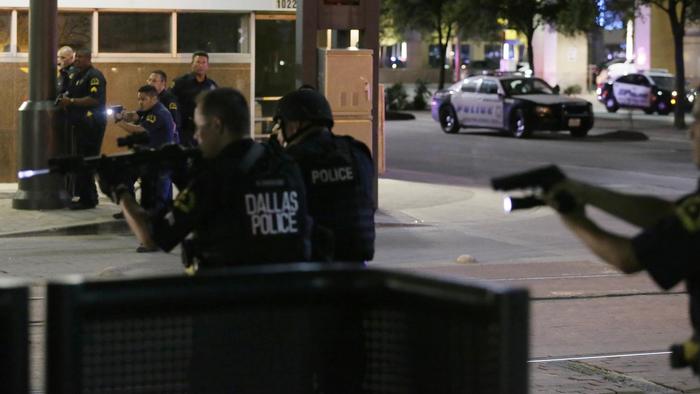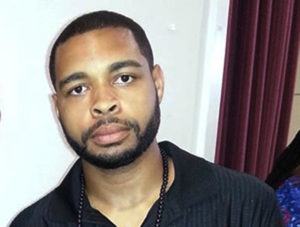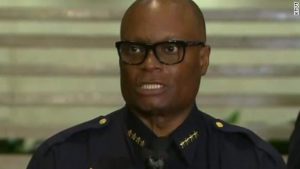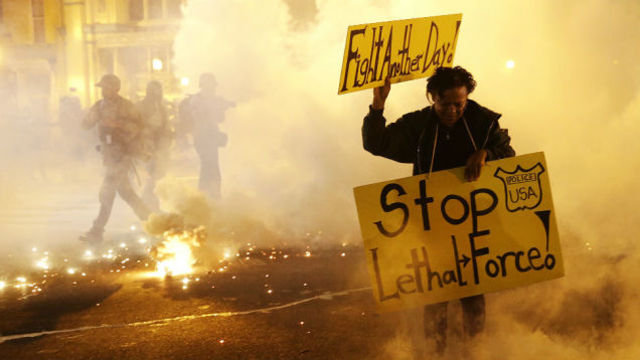
Black lives, blue lives
The shooting deaths of five police officers in Dallas, Texas, last Thursday was an act of premeditated murder. President Obama rightly called it “a vicious, calculated and despicable attack.”
The deadly fusillade was unleashed by one man acting alone: Micah Johnson, a 25-year-old veteran of the war in Afghanistan, who used his training, skill, and the same type of weapon used in combat to leave a trail of corpses and wounded bodies before being killed by a police bomb delivered by a robot. This time there is no Islamic connection, no broader terrorist plot. Just a very angry and misguided young man with a thirst for vengeance, access to a very powerful weapon, and the cold-blooded will to inflict lethal violence on a big scale.

This tragedy is as ironic as it gets. Johnson told a police negotiator that he was angry at the recent killing of unarmed black citizens in Louisiana and Minnesota and claimed that he was inspired by the “Black Lives Matter” movement. In fact, Johnson took advantage of the peaceful protest held by the movement on that night in downtown Dallas, which he knew would draw a police presence, to avail himself of the targets he wanted to mow down: white men in blue. In doing so, he set back the cause of the Black Lives Movement, which is about justice rather than vengeance, and targeted a police department led by an African American chief and guided by a philosophy in stark contrast to that practiced by most of the police departments involved in the recent spate of highly dubious killings of African Americans. Those kind of distinctions and nuances were obviously lost on Johnson who, according to what we know so far, was an alienated and probably disturbed individual.
But war does that to many people, and the war on Afghanistan and Iraq are nothing if not wars of vengeance in which many innocent people, like the cops in Dallas who had nothing to do with the unjustified police killings of blacks in too many places in the United States to list, end up as so much collateral damage. A wedding party mistaken for a Taliban meeting. A Doctors without Borders hospital bombed to the ground for the apparent reason that they treated everyone, not just the combatants on “our side.” And so on and on. Wars of vengeance waged with indiscriminate violence sometimes breed warriors who bring that mindset home. Johnson may have been one of them.

The horror wrought by Johnson in Dallas, as cruel and callous as it was, should not obscure the larger realities of policing in America, especially but not only when it comes to blacks. Let me state it as crudely and plainly as possible. Cops in America get away with murder all the time. Juries that judge cops are almost always O.J. Simpson-type juries. I mean by this that no reasonable person could have come to the conclusion that O.J. Simpson was not guilty. But the jury, made up in large part of black women, were less interested in the overwhelming evidence of guilt than in preventing a black hero from being punished on the evidence of a racist cop and an arrogant, white woman prosecutor when over the years so many cops had gotten away with killing black citizens. Lawyers call this jury nullification.
Jury nullification is the norm when cops are tried. Juries seldom convict cops evidently guilty of homicide or aggravated assault. The police officers who murdered Arthur McDuffie in Miami a generation ago, and then tried unsuccessfully to cover it up as a motorcycle accident, were all acquitted. In that case, vengeance for impunity came in the form of indiscriminate murder, burning and looting in the Miami riot of 1980. The same thing happened on a larger scale in Los Angeles a dozen years later when cops caught on video mercilessly brutalizing a black citizen, Rodney King, were all acquitted.
Juries are just not willing to convict cops almost regardless of the evidence. A black man is confronted by cops for selling cigarettes on a street in New York City, something that happens all the time in the city. He ends up dead. Another man in another city is confronted by police for selling movies outside a convenience store, despite the fact that the owner of the store had not complained to the police. He too ends up dead. Another black man is arrested by the police and dies of a spinal injury in police custody on the way to jail. Two police officers have already been acquitted in this incident. A third trial resulted in a hung jury. A fourth police officer is slated to be tried soon. Yet another black man is stopped for a broken tail light. This man also ends up killed by a cop. In Miami a young Puerto Rican wielding a paint pistol in a neighborhood renowned for graffiti art is doggedly pursued by a police officer who applies a Taser resulting in the man’s death. There are so many more similar cases to even touch upon here.

The common thread in all these cases is the banality of the offense being policed compared to the irreparable consequences of the manner of policing. The vogue of aggressively policing even the most minor offenses took hold in New York City more than two decades ago and spread like wildfire. This practice tends to provoke unnecessary confrontations that escalate to tragedy for no rational reason. The people killed by police often are not involved in major or even minor crimes.
In some cases, however, in which the macho police culture, unleashed by the philosophy of aggressive policing, clashes with the macho culture of minority gang members, an especially explosive mix is produced. The prevalence of black-on-black crime creates a very perilous, no-win situation for police. The community demands their presence yet many people in the same community resent the police to the point of initiating violence against the cops. Police work is tough work.
There is a larger frame from which to see this whole, many-sided set of tragedies. It is the basis of a superb essay by Roy Scranton, an Iraq war veteran, which delves into what he calls “the mythic story so central to our sense of ourselves as a nation.” It was published in the New York Times before the recent tragedies: The literary historian Richard Slotkin called this story “the myth of regeneration through violence,” and he traces it from the earliest Indian captivity narratives through the golden age of the western, and it’s the same story we often tell ourselves today. It’s a story about how violence makes us American. It’s a story about how violence makes us good.
But, as Scranton concludes, “The chastening truth is that violence debases and corrupts.”


